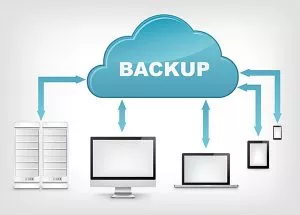Data is the lifeblood of every business. The inability to access that data could result in damage that takes some organizations years to repair. In some cases, that lack of access may very well spell the end of the road. Your future is only as promising as your business continuity plan, and your backup strategy is an integral cog in the machine. With that in mind, we have outlined a handful of fundamental strategies that will help make your business resilient in the face of any disaster.
Protect Data at Every Level
Enterprise applications such as MySQL, Exchange Server, and Hyper-V function as their independent systems. They come complete with their user roles, access policies, and security features. They're also responsible for generating and managing data that is probably as important as the data you protect on your operating system. Whether it's handled with a native tool baked into the system or an all-in-one solution, that data should be included in your backup plan. Complete system protection must cover file data, configuration data, application data and beyond.
Backup Your Backups
Most IT professionals are well aware of the 3-2-1 Rule. It's a data protection principle that preaches a more reliable way to backup sensitive information. Here's how it breaks down:
- Keep three copies of any data you can't afford to lose
- On storage two mediums – hard drive and USB drive, NAS device and cloud server, etc.
- With one copy stored offsite
Whether it's the result of a deteriorated DVD or broken flash drive, backups fail on a regular basis. A second copy provides some added assurance, but a third gives you peace of mind that comes from knowing your data can be recovered even if two backups happen to fail.
Store Backups in Multiple Locations

The 1 component of the 3-2-1 rule stresses the importance of keeping your backups in different places. Creating backups of your blog might protect you from attacks on the web server, but what happens when your local server is hit with malware or hardware failure? If that server houses all of your backups, having three copies won't do you any good. Keeping one copy on your local NAS appliance, another at your backup site, and a third in the cloud is an example of how you can make sure your data is always available.
Set Logical Recovery Goals
You want to rebound from a disaster as soon as possible. Instead of winging it and hoping for the best, map out that road to recovery by setting specific recovery goals. Recovery point objective (RPO) and recovery time objective (RTO) are essential to business continuity planning. While the names suggest a degree of commonality, they are two entirely different parameters that play an equally important role in devising a backup plan that best suits your business requirements. RPO refers to the maximum period of time in which data is lost during a disruption. The best way to sum it up is an estimation of how much data you can afford to lose amid a disaster. This parameter is vital when it comes to determining how often you need to backup your data. If you set your RPO at eight hours, that means you have decided that you can lose eight hours worth of work and whatever data produce within that interval. To meet that objective, you would need to perform a backup at least once every eight hours. Anything less could hinder your ability to recover that data. RTO refers to the target time designated to recover from an incident. In order words, it defines how long an organization can afford to be inoperable before a business is negatively affected. Let's say you set your RTO at three hours. That means you essentially have three hours to get your servers, networking equipment, or telecommunications back up and running. It's a pretty small window, so you would need to invest a lot of time and resources into disaster preparation to make sure that objective is achieved. Whereas RPO is focused on backup frequency, RTO sets the tone for business continuity as a whole. Used correctly, both can provide a much-needed degree of measured guidance when responding to a disaster.
Make Data Security a Priority
The same aspects that help increase business efficiency and agility have made us more vulnerable than ever. From cloud apps to mobile devices and everything in between, each piece of technology we implement is yet another attack vector for the bad guys to lock on. Data is always under fire. Organizations must make a concentrated effort to develop a business continuity strategy that protects against sophisticated outside attacks as well as the ever-looming threat of human error from within. A business continuity plan is not complete without a strong focus on data security.
Conclusion
Losing even the smallest amount of data can have game-changing ramifications for your business. To protect it, you need to be prepared for every possible disaster scenario. Although it's merely one piece of the business continuity puzzle, an effective backup plan can make sure you retain as much of that data as possible.
You May Also Like
- Backup and Disaster Recovery Cloud Data Protection
Comparing On-Premises vs. Cloud Backups: Which Is Right for Your Business?
February 19th, 2025 - Backup and Disaster Recovery
Best Practices for Implementing On-Premises Data Backup Solutions
February 12th, 2025 - Backup and Disaster Recovery
The Critical Role of On-Premises Data Backup in Disaster Recovery Planning
February 5th, 2025

